Mobile apps are the new front of business for 2024. And with Industry 4.0, the importance of apps is greater than ever.
That’s why there are a lot of businesses that want to develop an app for their own business. However, not everyone is tech-savvy enough to know what are different types of apps are, the app development process, the cost to do so, how long it takes, and so on.
Now, if you have the same question, this blog is for you.
Here, we shall be discussing everything you need to know about the mobile app development process, with each step described in detail. Therefore, with this being said, let’s get right into it, starting with:
Why Invest in Businesses Invest in Mobile App Development?
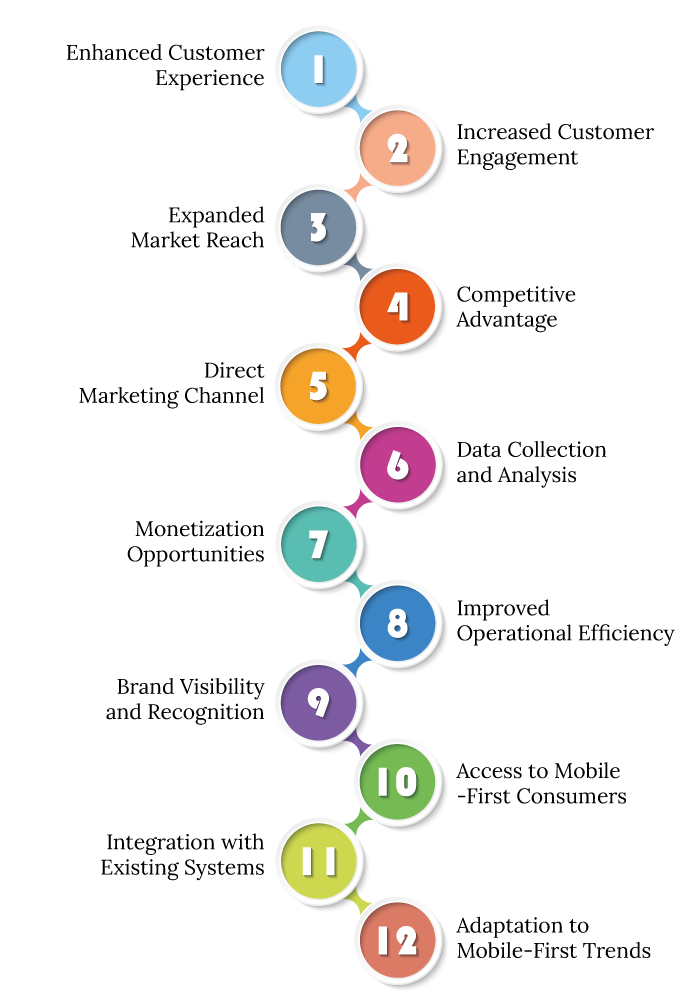
So, why do companies decide to invest in business app development?
This is a big question that a lot of investors ask. After all, signing a cheque for thousands of dollars is no small thing.
Fortunately, there are more reasons to develop a mobile app than not. Therefore, before we discuss the app development process, let’s first discuss these points.
They are, as mentioned below:
· Enhanced Customer Experience
Mobile apps provide a personalized and convenient experience for customers, allowing them to access products, services, and information on the go.
· Increased Customer Engagement
Apps enable businesses to engage with customers through push notifications, personalized offers, and loyalty programs, fostering brand loyalty and customer retention.
· Expanded Market Reach
Mobile apps open up new avenues for businesses to reach a broader audience, including users who prefer mobile devices over traditional platforms like desktops or laptops.
· Competitive Advantage
Having a well-designed and functional app can differentiate a business from its competitors and position it as innovative and customer-centric in the market.
· Direct Marketing Channel
Apps provide a direct and targeted marketing channel, enabling businesses to send promotional messages, offers, and updates directly to users’ devices.
· Data Collection and Analysis
Mobile apps allow businesses to gather valuable user data, such as demographics, preferences, and behaviors, which can be analyzed to gain insights for strategic decision-making.
· Monetization Opportunities
Powered by monetization strategies Apps can serve as revenue generators through in-app purchases, subscriptions, advertisements, or by driving traffic to other revenue-generating channels, such as e-commerce websites.
· Improved Operational Efficiency
Mobile apps can streamline internal processes, such as inventory management, order processing, and customer support, leading to improved operational efficiency and cost savings.
· Brand Visibility and Recognition
A well-designed app with a visually appealing interface can enhance brand visibility, increase brand recognition, and leave a lasting impression on users.
· Access to Mobile-First Consumers
With the increasing number of mobile device users, businesses can tap into the growing population of mobile-first consumers by offering a seamless mobile app experience.
· Integration with Existing Systems
Mobile apps can integrate with existing business systems, such as CRM or ERP software, enabling seamless data synchronization and enhancing overall business productivity..
· Adaptation to Mobile-First Trends
Investing in mobile app development aligns businesses with the increasing mobile-first trends, ensuring they stay relevant and accessible in a fast-evolving digital landscape.
App Development Terminology
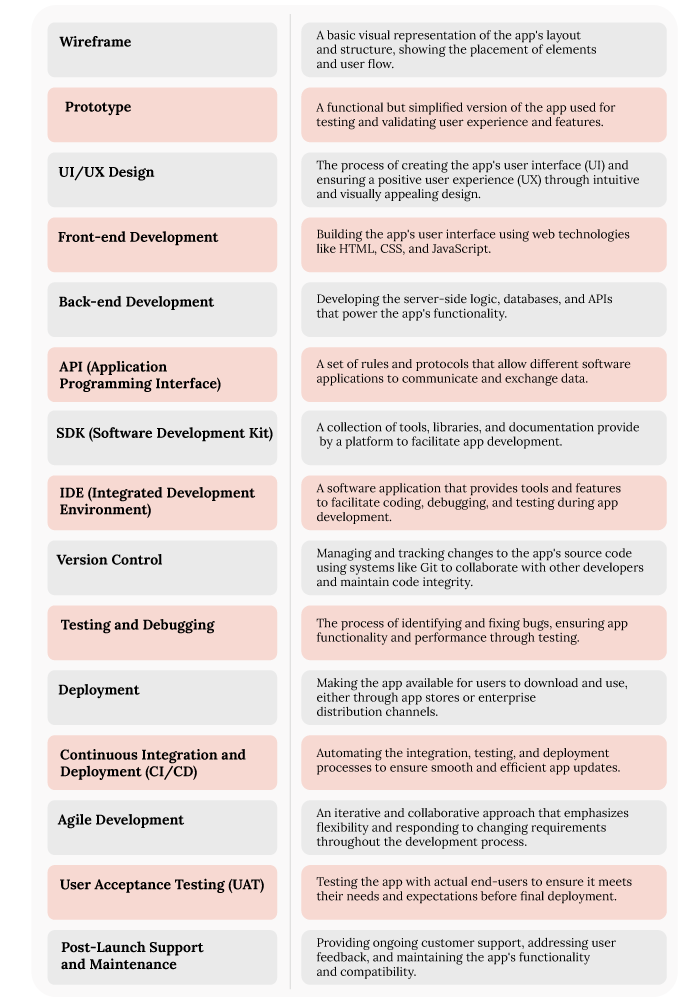
What is the mobile app development lifecycle?
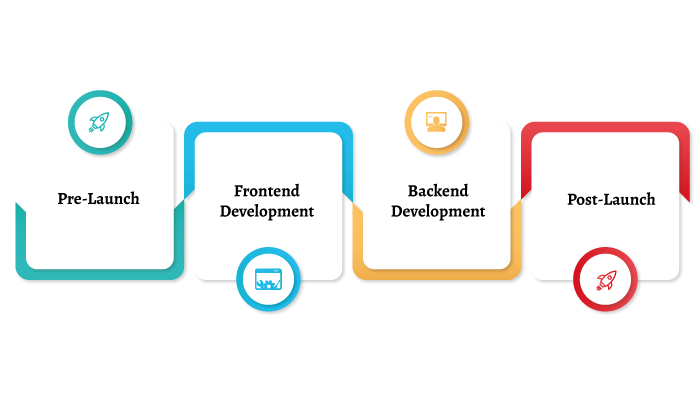
One last thing before we discuss the mobile app development process, is, the app development lifecycle.
Pre-Launch
- Requirement Gathering
- Planning Design
- UI/UX Design
Frontend Development
- User Interface Development
- Frontend Logic
- Integration
Backend Development
- Server-Side Development
- Database Design
- Data Management
Post-Launch
- Testing and Quality Assurance
- Deployment
- App Store Approval
- Launch and Distribution
- Maintenance and Updates
With this out of the way, let’s get into the entire app development process flow in the next section of the blog.
Step–By–Step App Development Process
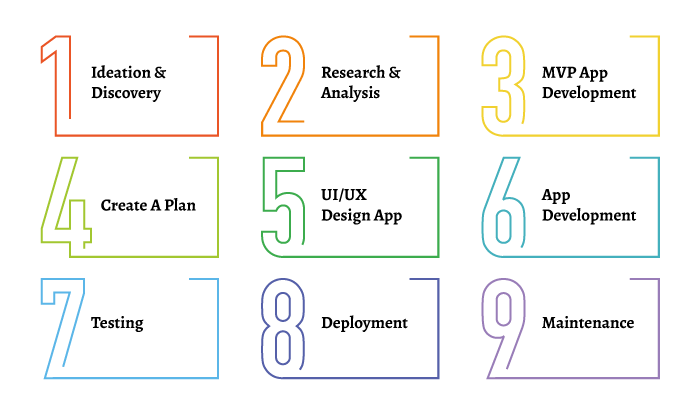
The mobile app development process is rather complex.
In this section, we shall be defining everything related to the app design and development process. Therefore, let’s get right into it, starting with:
1. Ideation & Discovery
The first thing you need to do is ideation and discovery. There are two things we need to do here. These are ideation and discovery.
Now, there are two different use cases. Let us explain.
Ideation
Ideation is a simple process that means coming up with a mobile app idea.
This happens when you want to develop an app out of nowhere. In layman’s terms, when companies are established with an app product or developing an app for their service-based product.
Define Purpose
On the other hand, this is the process you follow when you create an enterprise app.
You see, these apps are developed for a company’s internal use. This can be anything from workflow management to communication apps.
Once this is done, it’s time to conduct research and analysis that data.
2. Research & Analysis
Before starting the mobile app development process, it is crucial to conduct thorough research and analysis. This involves:
- Market Research: Understanding the target market, user demographics, trends, and demand for similar apps.
- Target User Research: Identifying the needs, preferences, and behaviors of the app’s target users.
- Competitor Analysis: Analyzing the strengths and weaknesses of existing apps in the market to identify opportunities and differentiate your app.
3. MVP App Development
Minimum Viable Product (MVP) Development helps validate the concept and reduce development costs. It involves:
- Validating the Concept: Building a basic version of the app with core features to test its viability and gather initial user feedback.
- Testing Usability: Conduct usability testing to ensure the app’s functionality, navigation, and user experience meet the target users’ expectations.
- Saving Development Costs: Focusing on essential features and gradually expanding based on user feedback and market response.
- Getting Early User Feedback: Collect feedback from early users to refine and improve the app’s functionality and user experience.
- Attracting Investors: Demonstrating the potential of the app and its market acceptance to attract potential investors.
4. Create A Plan
Before diving into development, it is important to create a detailed plan for the app’s development process. This involves:
- Choosing a Platform: Selecting the platform(s) on which the app will be developed based on the target audience and market considerations. Here you have the following options:
- Android
- iOS
- PWA
- Building a Tech Stack: Identifying the technologies, frameworks, and tools required to develop the app, considering factors like scalability, performance, and development expertise.
- Listing Out Features: Creating a comprehensive list of features and functionalities that the app will offer to meet user needs and stand out from competitors.
- Developing Roadmap: Creating a roadmap with timelines, milestones, and task allocation to ensure a smooth development process.
5. UI/UX Design App
Designing an appealing and user-friendly interface is crucial for the app’s success. Now, UI/UX Designing can be divided into different components. These are:
- Wireframe: Creating a basic visual representation of the app’s layout and structure, outlining the placement of key elements and user flow.
- Style Guide: Defining the app’s visual style, including color schemes, typography, and graphical elements, to maintain consistency throughout the app.
- Mockups: Developing high-fidelity visual representations of the app’s screens, showcasing the UI design and interactivity.
- Prototype: Building an interactive, functional prototype to simulate the app’s user experience and gather feedback before development.
6. App Development Process
Well, this is part of the app development process where mobile app developers put the most effort in. App development can be divided into two different steps, as mentioned below:
- App Frontend Development Process: Building the user interface of the app using front-end technologies like HTML, CSS, and JavaScript, focusing on responsiveness and visual appeal.
- App Backend Development Process: Developing the server-side logic, APIs, and database management to handle data processing, storage, and interaction with the app’s front end.
7. Testing
App testing is a critical phase of the app development process to ensure the app’s quality and functionality. It involves conducting various testing methods:
- functional testing
- usability testing
- performance testing
- compatibility testing
And more
8. Deployment
The deployment stage involves making the app available to users. So, what do we do here? well, here are some things we need to do here:
- Preparing the app for distribution, following the guidelines and requirements of app stores (e.g., Apple App Store, Google Play Store).
- Submitting the app for review and approval.
- Setting up necessary backend infrastructure and configuring servers.
9. Maintenance
After the app is deployed, ongoing maintenance is essential.
Monitoring the app’s performance, analyzing user feedback, and addressing bug fixes and issues promptly. And the team also regularly updates the app to improve functionality, security, and user experience.
In addition to this, they also ensure compatibility with new OS versions and device updates.
This is the entire app development process. With this out of the way, let’s look at some of the best practices for mobile app development in the section below.
Best Practices For App Development Process
It’s highly likely that you might some mistakes during the app development process. So to avoid those and get the full benefit out of it, here are some best practices that you should follow:
- Clearly define objectives, target audience, and features.
- Prioritize user experience (UX) throughout development.
- Adopt agile development for flexibility and iterative improvements.
- Develop multiple platforms using frameworks like React Native or Flutter.
- Design a scalable and robust backend infrastructure.
- Implement secure coding techniques and follow guidelines.
- Conduct comprehensive and automated testing.
- Familiarize yourself with app store requirements.
- Integrate analytics tools and gather user insights.
- Optimize app performance for speed and efficiency.
- Continuous Integration and Deployment (CI/CD), automate integration, testing, and deployment processes.
- Plan for regular bug fixes, feature updates, and compatibility maintenance.
- Optimize app listing for higher visibility and downloads.
- Conduct thorough Beta Testing and User Acceptance with diverse users before launch.
- Provide timely customer support and resolve issues promptly.
Mobile App Development Cost
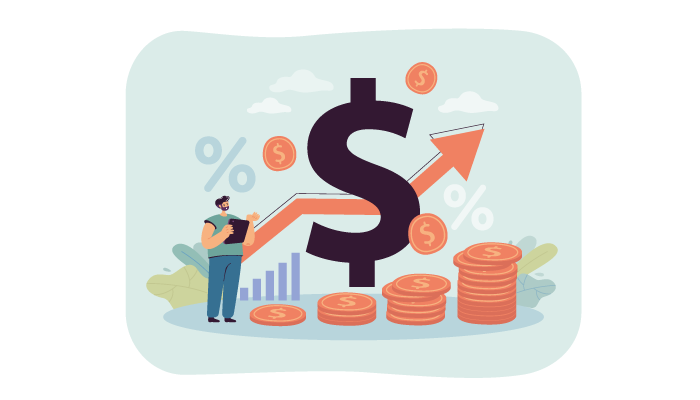
It’s time to answer the big question, how much does it cost to develop a mobile app?
Well, mobile app development cost highly depend on various different factors. For instance:
- Type of app
- Platform
- Tech stack
- Complexity
- Size
- Development time
- Features
And so on.
Well, on average the cost can range from $15,000 to $300,000 based on the factors mentioned above.
Moving on, let’s see how long it takes to develop a mobile app.
How Long Does It Take To Develop A Mobile App?
Much like mobile app development cost, the time taken to develop a mobile app highly depends on the specifications of the app development process and the project itself.
On average, it can range from 12 weeks to 90 weeks.
Now if you want to learn more about app development time or cost, we recommend that you consult a mobile app development company like Nimble AppGenie.
Conclusion
Mobile app development process can be long and complex. But in this blog, we discussed entire app development step by step process, explaining everything to you. And with this, we conclude our blog.
FAQ
The app development process refers to the step-by-step procedure followed to create a mobile application, including planning, design, development, testing, and deployment.
The time required to develop an app varies based on the complexity, features, and resources available. On average, it can take anywhere from a few weeks to several months to complete.
The key stages include ideation and planning, wireframing and design, development, testing, deployment, and ongoing maintenance and updates.
Popular programming languages for app development include Java, Swift, Kotlin, and React Native, depending on the platform (Android or iOS) and specific requirements.
User experience is crucial as it determines how users interact with and perceive your app. A seamless and intuitive UX enhances user satisfaction and increases app success.
Wireframing and prototyping help visualize the app’s structure, layout, and user flow before actual development begins, allowing for early feedback and adjustments.
Agile development is an iterative and flexible approach that emphasizes collaboration, adaptability, and quick releases. It enables developers to respond to changing requirements and deliver high-quality apps efficiently.
App security can be enhanced through practices such as secure coding, data encryption, secure authentication methods, regular security audits, and updates to address vulnerabilities.
Beta testing involves releasing a pre-release version of the app to a limited group of users for testing and feedback. It helps identify bugs, gather user insights, and improve overall app quality.
Consider factors like experience, expertise, portfolio, client reviews, communication, and budget when selecting an app development team or agency.
App development costs vary depending on factors like complexity, features, platform, and development team rates. It is advisable to get a detailed quote from potential developers.
Monetization options include in-app purchases, subscriptions, advertisements, sponsorship, freemium models, and selling user data (with user consent, following legal and ethical guidelines).
To submit your app to app stores like Google Play or Apple App Store, you need to create developer accounts, follow submission guidelines, provide necessary app information, and comply with app store policies.
Regular updates are essential to address bugs, introduce new features, improve performance, and enhance user experience. The frequency of updates depends on user feedback, market trends, and business goals.
Yes, you can modify or add features to your app post-launch. It’s common to release updates based on user feedback, market demands, and your business objectives. Continuous improvement is key to app success.

Udai Singh is a senior content writer with over 6 years of experience in creating content for FinTech, eWallet, EdTech, and App Development. He is an expert in simplifying complex concepts and creating engaging content that resonates with the audience.
Table of Contents




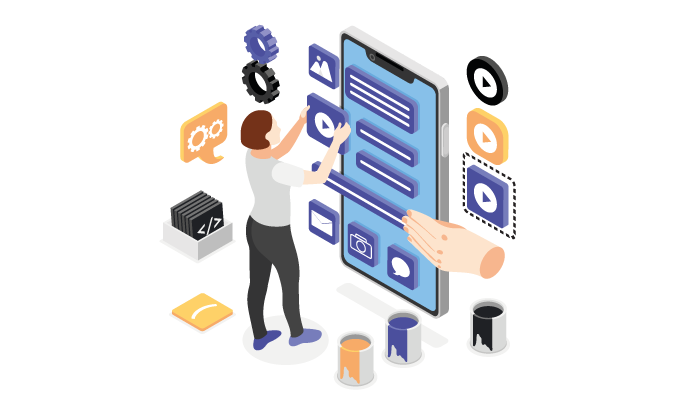








No Comments
Comments are closed.